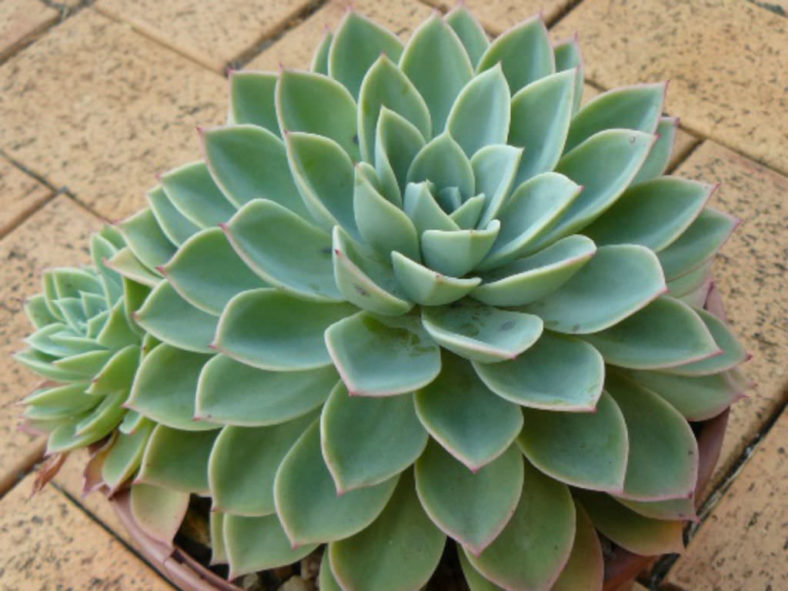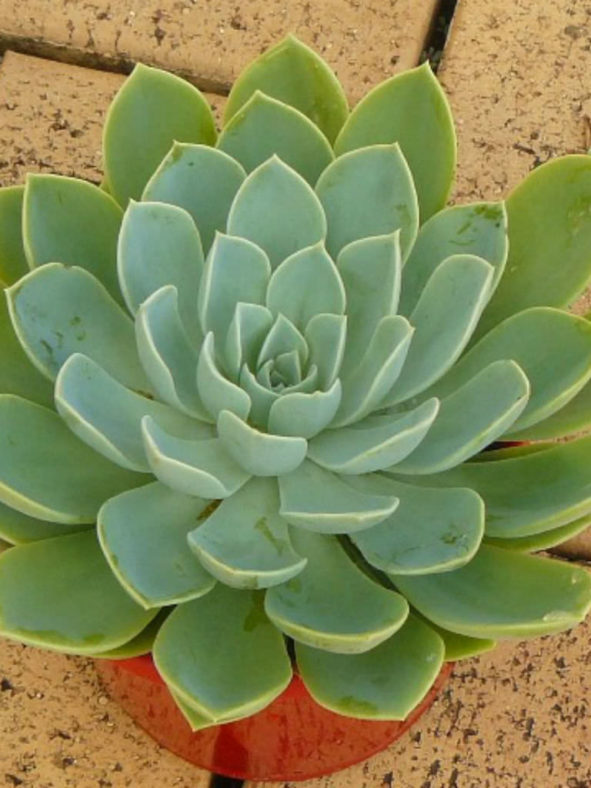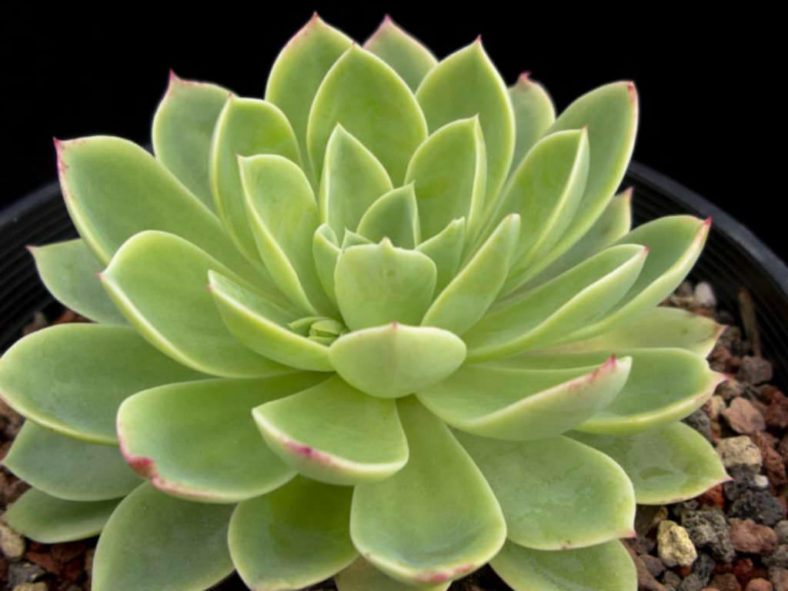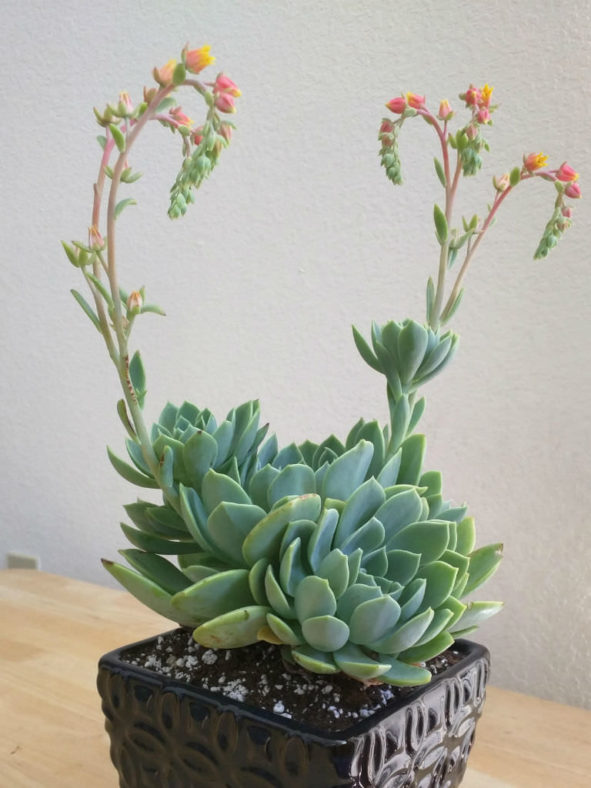Scientific Name
Echeveria 'Coolvue'
Synonym(s)
Echeveria 'Blue Atoll', Echeveria 'Katie Derbyshire'
Scientific Classification
Family: Crassulaceae
Subfamily: Sempervivoideae
Tribe: Sedeae
Genus: Echeveria
Origin
Echeveria 'Coolvue' is a hybrid created by Mal Morgan in Picton, New South Wales, Australia. In the United States, this hybrid is sold as Echeveria 'Blue Atoll.'
Description
Echeveria 'Coolvue', also known as Echeveria 'Blue Atoll', is a fast-growing succulent that forms beautiful rosettes packed with fleshy blue-green leaves that have a soft look from its powdery coating of farina. The rosettes can grow up to 6 inches (15 cm) tall and 10 inches (25 cm) in diameter, freely producing offsets.
In spring, the rosettes send up stalks that grow 8 inches (20 cm) tall, bearing small, bell-shaped, orange flowers with yellow tips.

Hardiness
USDA hardiness zones 9a to 11b: from 20 °F (−6.7 °C) to 50 °F (+10 °C).
How to Grow and Care
Most common Echeveria species are not complicated succulents to grow, provided you follow a few basic rules. First, never let water sit in the rosette, as it can cause rot or fungal diseases that will kill the plant. Additionally, remove dead leaves from the bottom of the plant as it grows. These dead leaves provide a haven for pests, and Echeverias are susceptible to mealy bugs. Finally, as with all succulents, careful watering habits and plenty of light will help ensure success.
Repot as needed, preferably during the warm season. To repot a succulent, ensure the soil is dry before repotting, then gently remove the pot. Knock away the old soil from the roots, removing any rotted or dead roots. Treat any cuts with a fungicide.
Most Echeverias can be easily propagated from leaf cuttings, although some are better from seeds or stem cuttings. To propagate a leaf cutting, place the individual leaf in potting soil for succulents and cover the dish until the new plant sprouts.
Learn more at How to Grow and Care for Echeveria.
Links
- Back to genus Echeveria
- Succupedia: Browse succulents by Scientific Name, Common Name, Genus, Family, USDA Hardiness Zone, Origin, or cacti by Genus
Photo Gallery
Click on a photo to see a larger version.


